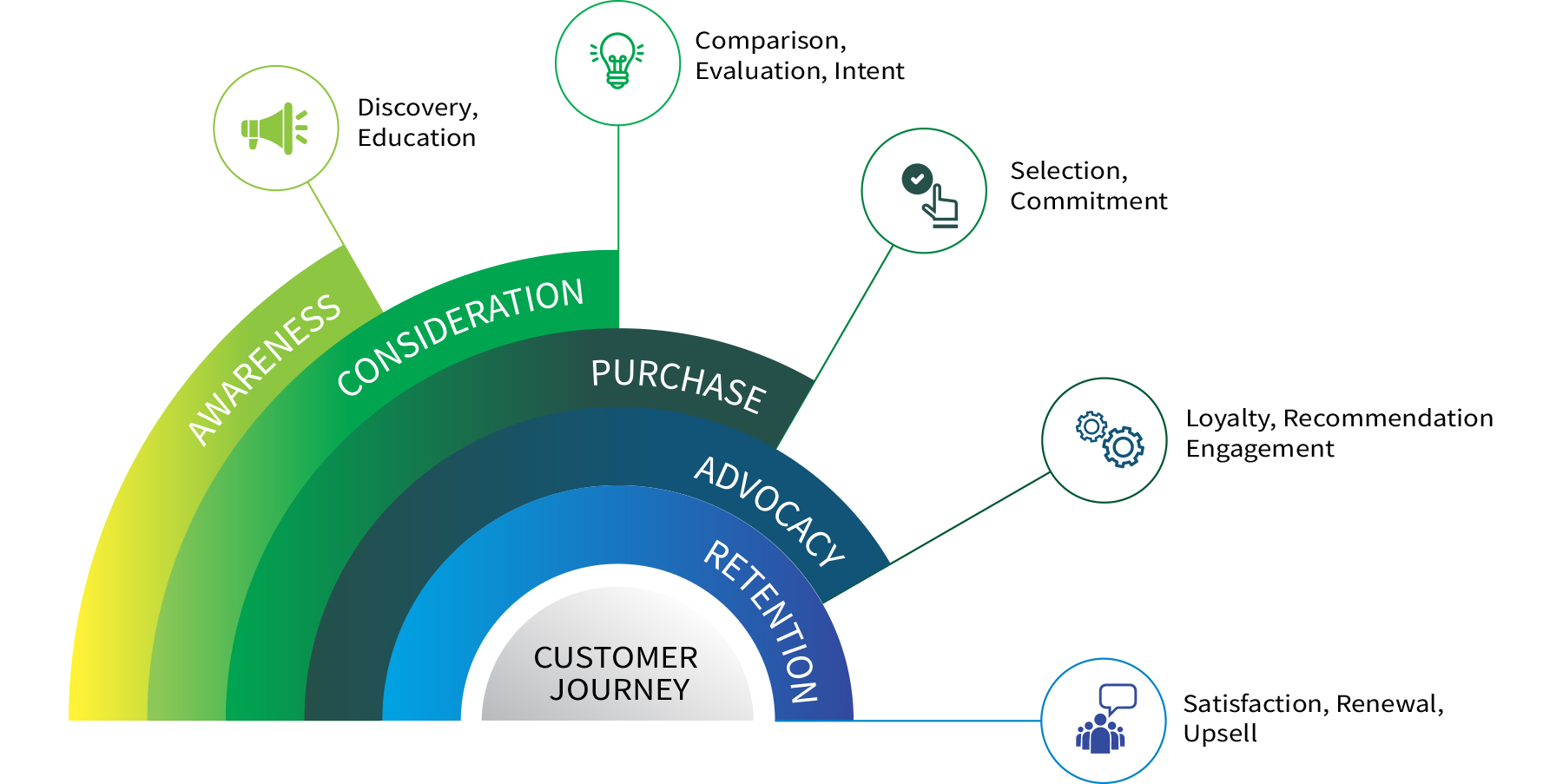When it comes to business revenue generation, the mantra for success is no secret: attract, convert, and retain customers. These three key components of inbound marketing form the foundation of a robust revenue generation strategy. Yet, businesses often find success in one area while enduring a state of stagnation or decline in others. Identifying where you find success and identifying the gaps can form the foundation for sustainable growth and profitability.
Understanding the Customer Journey
The customer journey is a roadmap detailing how a potential buyer evolves from being aware of your brand to becoming a loyal customer. This voyage aligns seamlessly with the three revenue generation buckets—each stage requiring a tailored strategy to move the customer down the sales funnel successfully.
1. Attracting Customers
Attracting customers is akin to making a first impression. You aim to captivate and entice them to learn more. This stage is all about visibility and engagement. Some proven methods for attracting customers include:
Content Marketing:
Create valuable content that addresses your target audience’s needs, questions, and pain points. Blogs, webinars, videos, and ebooks are effective tools to draw interest.
SEO
Optimize your content strategy so that it ranks higher in search engine results pages (SERPs), making it easier for potential customers to find you.
Social Media
Use social media platforms to reach and engage with your target audience. Regular posts, live sessions, and interactive content will increase brand awareness.
2. Converting Customers
Once you’ve attracted potential customers, the next step is to convert those leads into sales. This stage requires understanding the needs of your leads and providing them with a solution. Tactics for converting customers include:
Personalized Marketing
Tailor your messaging and offers based on the customer’s previous interactions with your brand. Personalization can significantly boost conversion rates.
Effective Sales Strategies
Focus on your customer’s needs, provide relevant information, and guide them through the purchasing process smoothly.
Streamlined Customer Experiences
Ensure that every touchpoint of your customer experience, from landing pages to checkout processes, is optimized for ease of use and efficiency.
3. Retaining Customers
Acquiring a new customer can be five times more expensive than retaining an existing one. Hence, customer retention is critical for long-term success. Effective strategies to keep customers returning include:
Customer Service Excellence
Providing easy access to swift and helpful customer service can turn a satisfied customer into a loyal advocate. Leverage AI, chatbots, and self-service portals to enhance the customer experience.
Personalized Engagement
Continue engaging with your customers through personalized emails, social media interactions, and tailored offers. Remember, engagement doesn’t end at the sale.
Knowledge Base for Self-Service
Empower your customers by providing a comprehensive knowledge base that includes FAQs, how-to guides, and troubleshooting information. This resource allows them to find answers quickly and efficiently, often improving satisfaction and fostering a sense of autonomy, contributing significantly to retention.
Measuring Success
To understand where you excel and where you need to improve, it’s essential to measure your performance at each stage. KPIs to gauge success include:
- Website traffic
- Conversion rate
- Customer acquisition cost
- Retention rate
- Customer lifetime value
Achieve Sustainable Revenue Generation
Attracting, converting, and retaining customers are three pillars of a successful business strategy. Excelling in all three is no small feat but understanding each stage of the customer journey and implementing targeted strategies can set your business on the path to revenue generation excellence. Ensure a balanced approach across all three to build a sustainable and profitable business.

